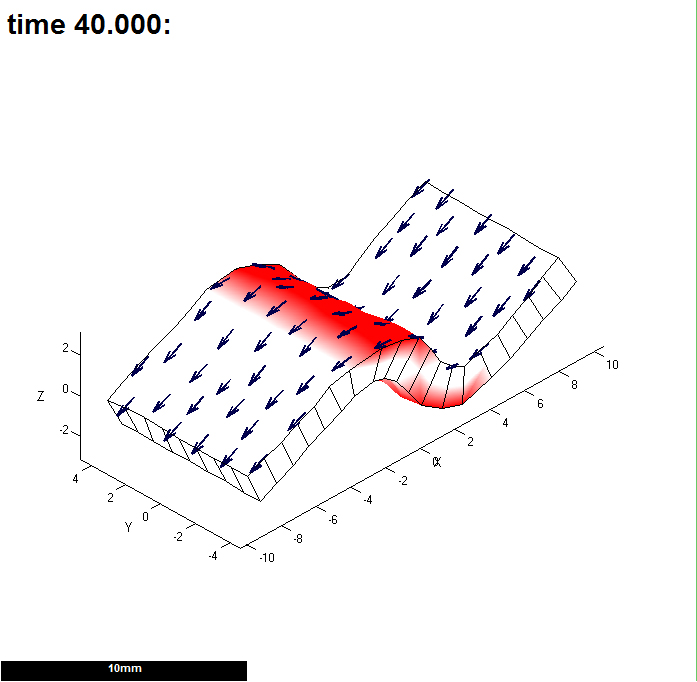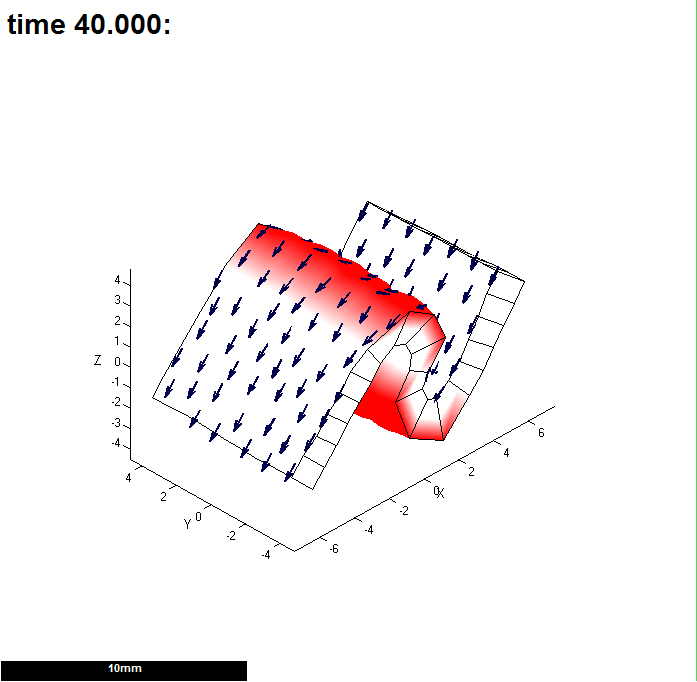Time: tradeoff
Return to GFtbox hints and tips
Choosing a timestep that is short enough to be accurate and yet not take too long to compute
There is a tradeoff between speed and the accuracy with which the equation solver can solve the equations. This is feature of all numerical modelling. Continuous time is approximated by a series of short intervals or steps (dt). With steps that are too long the mesh will grow more than about 2% - an acceptable limit. Very short steps take a long time to compute and can also suffer rounding problems. This is an example of subdividing a rectangular mesh in the region in which curves will develop.
It still might not be correct because the mesh itself could be too coarse.


